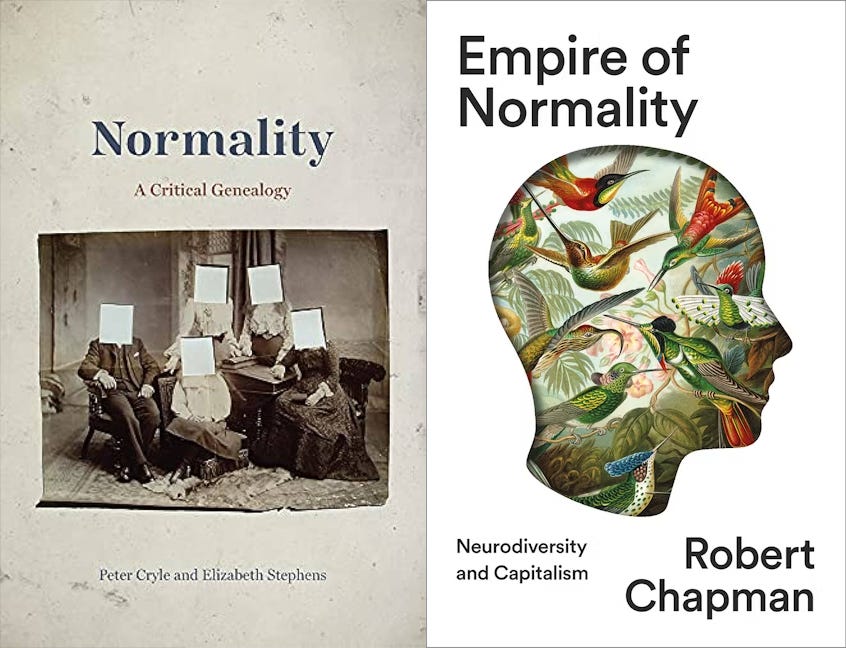What I'm reading (April 2024 edition)
On the parallel histories of statistics, visualization, and the sciences
The Visual Discovery conference finished a week ago, so I’ve spent some time winding down and getting ready for some projects that will keep me occupied for at least two years. For example, I’m revamping my one-day data visualization and infographics course for companies and organizations; more about that soon.
One of these projects isn’t about visualization per se, and has sent me down a rabbit hole. I’ve been digging into the parallel histories of statistics—visualization is a partial outgrowth of it, of course—and medical science, particularly psychiatry. In case that you need reading recommendations, here are some of the books that I’ve enjoyed in the past couple of weeks (disclosure: the links below are Amazon affiliate links):
Bernoulli’s Fallacy. According to its author, mathematician Aubrey Clayton, statistical reasoning—and, as a consequence, social science, medical science, and other disciplines—got broken between the middle of the 19th century and the first third of the 20th. The reason? A profound misunderstanding of what probability is.
Clayton is a Bayesian, and writes that we should “let probability mean uncertainty and not just frequency of measurement error.” In plain language, probability is subjective; it’s the degree of certainty that we should have given incomplete information (which can be data, but it doesn’t need to be just data) about whatever we wish to understand.
Clayton says that his book is “a piece of wartime propaganda,” and he means it; to give you an idea, one of the chapters is titled “The Frequentist Jihad.” He also connects the history of statistics to eugenics, racism, and imperialism, and he’s right to do so. Modern statistics were created in great part to provide a scientific-sounding justification to misogyny, xenophobia, and many other heinous ideas.
In spite of its sometimes overblown rhetoric, Bernoulli's Fallacy is a serious book about epistemology, logic, and reasoning. It’s heavily inspired by E. T. Jaynes’s classic Probability Theory: The Logic of Science, which I own, but I’ve been unable to finish (it’s too technical for me, at least for now.) I’ll give it a second try, though, thanks to Clayton.
Normality and Empire of Normality. These two go hand-in-hand. Normality is an academic genealogy of what it is to be “normal” and of the multiple meanings of that word, from the common one—which is often erroneously intertwined with normative—to the statistical and the medical, which have changed enormously in the past couple of centuries.
Chapman’s book summarizes that genealogy, and focuses on how statistical and medical notions of normality have being used to oppress neurodivergent people and other minorities. It’s a justifiably combative (and thrilling) read.
The Rigor of Angels. This one isn’t strictly related to the aforementioned project, but it was hard to resist when I discovered it. I’m a sucker for popular science books that explain the unexpected links between disparate thinkers, writers, or scientists. In this case, Kant, Borges, and Heisenberg.
What is reality? Is it something out of ourselves that we can grasp directly? Or is it a construct, a product of the interplay between our brains and our cultures? Or is reality all of the above at the same time? Moreover, how can we be reasonably certain that we know what we think we know about it? All these questions and many more are delightfully explored in this little gem.
That’s all for now. I leave you with Shelby Lynne and Allison Moorer’s beautiful rendition of Bob Dylan’s haunting Not Dark Yet:
—
If you’ve enjoyed this newsletter, please consider checking my workshops and books.







the song reminds me of the recent TEAR THE FASCISTS DOWN cover from Masters of the Air https://youtu.be/8gS6h04cKPI?si=LXbUlw2DahdhEo1b